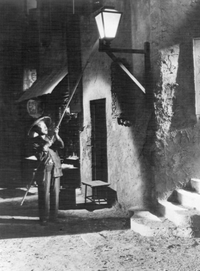Times Higher, 12 May 2016
What books or authors did you love most as a boy?
I spent the first 12 years of my life in the Netherlands, so it probably sounds rather predictable to say that Anne Frank made a deep impact. But it is certainly true that I was very much drawn by some of the darker books in my parents’ small library, including Jerzy Kosiński’s The Painted Bird, an account of a boy who wanders through Eastern Europe during the Second World War, searching in vain for his deported family.
Your first degree was in history and Russian. When you were learning the language, which Russian novelists or poets were your favourites?
I relished Dostoevsky, and read everything by him, but his Notes from the Underground left an indelible impression. I have never been all that keen on poetry, which probably made reading Pushkin’s Eugene Onegin all the more unforgettable.
Which Chinese writers would you recommend, and why?
Everybody should read Yang Xianhui, whose haunting, sparse tales of survival from a labour camp during Mao’s Great Famine are based on decades of work tracking down and interviewing survivors. Some of his work appears in translation in Woman from Shanghai: Tales of Survival from a Chinese Labor Camp.
Which works of fiction about the Cultural Revolution did you find most interesting?
What is fiction? I devoured Ken Ling’s tragic The Revenge of Heaven: Journal of a Young Chinese in one sitting when I was an undergraduate in 1983. It was one of the first Red Guard memoirs to appear, and it was criticised by some sinologists at the time for being fictional, but it turns out that much of the horror he described can now be corroborated by evidence from the Chinese Communist Party archives. I recently managed to get in touch with him. He has had a very successful career as a computer engineer in California, and he would no doubt accept himself that aspects of his story were dramatised in the interests of narrative drive. That does not mean that it is not a truthful account, in the sense of “full of truths that are worthwhile knowing”.
Name a recent work by an early career scholar that you found particularly impressive.
I am not sure Despina Stratigakos can still be considered to be an early career scholar, but her Hitler at Home is fresh, innovative and beautifully written.
With the completion of your trilogy, what is your next focus of research?
What strikes me with Mao was his ability to inflict horror on a huge scale and yet retain a genuine spell over many of his subjects. Much the same can be said of other dictators in the 20th century: millions cheered their leaders even as they were led to their deaths. The key, I think, is the extraordinary care with which these dictators cultivated their image. Nobody can rule through naked power alone. Dostoyevsky wrote that a ruler always uses both “magic and the sword” to keep power. Historians sometimes feel that the image dictators build for themselves, in particular the cult of personality, is nothing but a superficial deception, a lie that has to be discarded so that the machinery of repression can be revealed. But the horror of the gas chambers is incomprehensible without looking at how popular Hitler was, both in Germany and abroad. Many bought into the image he projected of himself as a vegetarian, a non-drinker, a non-smoker, a good, hard-working man. I am looking at how dictators throughout the 20th century, from Mussolini to Mao and Mengistu Haile Mariam, developed their image and learned from each other in doing so.
What is the last book you gave as a gift, and to whom?
I like to buy books (and flowers) for my wife. The last one was Between the World and Me by Ta-Nehisi Coates.
What books are you reading, or are on your desk waiting to be read?
I have a collection of books on 20th-century dictators piled high on the arms of my settee. The most riveting one is the first volume of Stephen Kotkin’s much-awaited Stalin trilogy.
